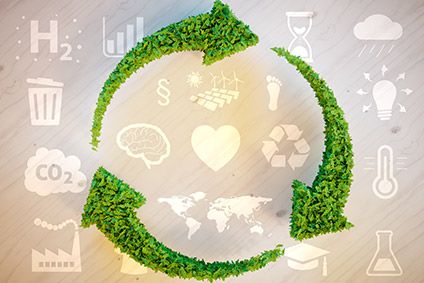
A consultation on an EPR scheme for clothing and textiles was expected from the UK Government’s Department for Environment, Food and Rural Affairs by the end of 2022.
The EPR is a strategy to add all of the environmental costs associated with a product throughout the product life cycle to the market price of that product. The UK Government, in its publication ‘Our Waste, Our Resources, A Strategy for England 2018’, committed to invoking the “polluter pay” principle and harness the potential of EPR. It identified five priority material streams for consideration under this commitment including textiles.
The UK Government was urged to ramp up its review of the EPR and bring it forward by three years to 2022, instead of an earlier suggested 2025, which the Textile Recycling Association said is too long given the rapidly growing competition from China and elsewhere to supply markets willing to take used clothes.
Speaking at the Environmental Audit Committee on 10 February, Secretary of State for Environment, Food and Rural Affairs, Therese Coffey, said: “I think it’s fair to say, I don’t anticipate an EPR for textiles coming into place in the near future. That may be disappointing to the Committee, but I’m conscious that we’ve got to prioritise.”
Philip Dunne, Chair of the Environmental Audit Select Committee, responded: “I just want to emphasise that this Committee did a ground-breaking piece of work exposing not just the issue Claudia [Member of Parliament for Leicester East] referred to, which is the dumping of huge quantities of textiles from this economy, but also exposing the modern slavery alive on our streets.
“Claudia Webbe is particularly aware of this because much of it was happening in her constituency. We took heart from the DEFRA response from your predecessor two years ago that there was going to be a consultation on this, and it would be very disappointing if that’s been bumped right off the agenda.”
In November last year, Dunne wrote to the Secretary of State for Environment, Food and Rural Affairs (DEFRA) expressing concern over delays in a range of promised policies which he stated were “holding up progress.”
He added that the government failed to meet the statutory deadline of 31 October to confirm new long-term targets for air quality, water, biodiversity and waste reduction, among other things with a key focus on tackling fast fashion.
In the last Parliament, EAC published a report on measures to tackle the negative environmental impacts of cheap clothing. In the report Fixing Fashion: clothing consumption and sustainability, the Committee warned that, in the absence of effective policies to deal with textile waste, over 300,000 tonnes of textiles were being thrown into household black bins every year and sent to landfill or incinerators.
It followed an inquiry into the fast-fashion model.
In its position paper published in September 2020, the Textile Recycling Association cited eight key issues it believes will be necessary to address in order to deliver a robust and comprehensive EPR framework, that would deliver substantial sustainable improvements across the clothing supply chain and a truly circular economy for the clothing and textile industry.



